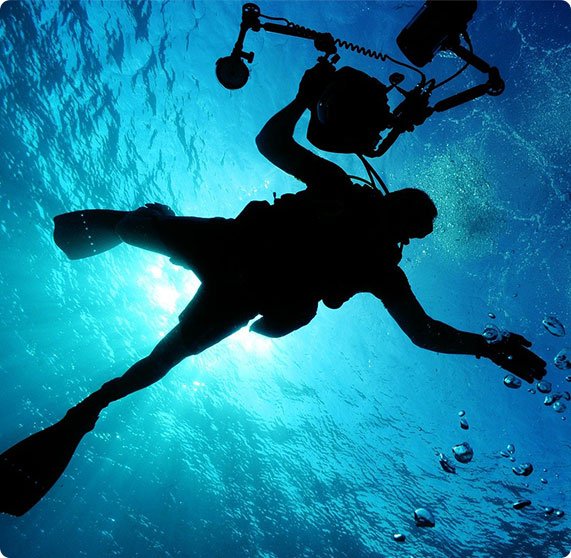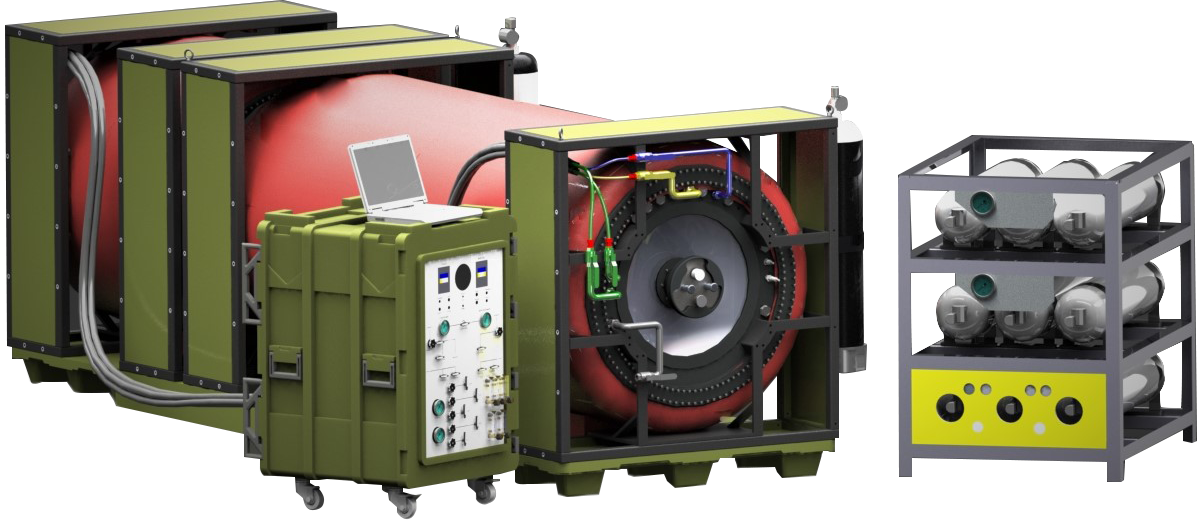Military Diving
Military diving operations are demanding on personnel, who are required to act fast in remote locations and in difficult and changeable conditions. The need for nearby, reliable, lightweight hyperbaric chamber capabilities has never been greater.
What makes us special?

Compact
Our compact modular solutions make transportation painless, requiring a small packaged volume, saving valuable space and multiple storage options.

Simple Interface
Our simple control panels and user interfaces are easy to understand and operate.

No Downtime
We offer servicing & maintenance solutions that minimise logistics and keep your system operational 365 days a year.

Portability
Our systems don’t require structural reinforcements or expensive installation on a vessel.
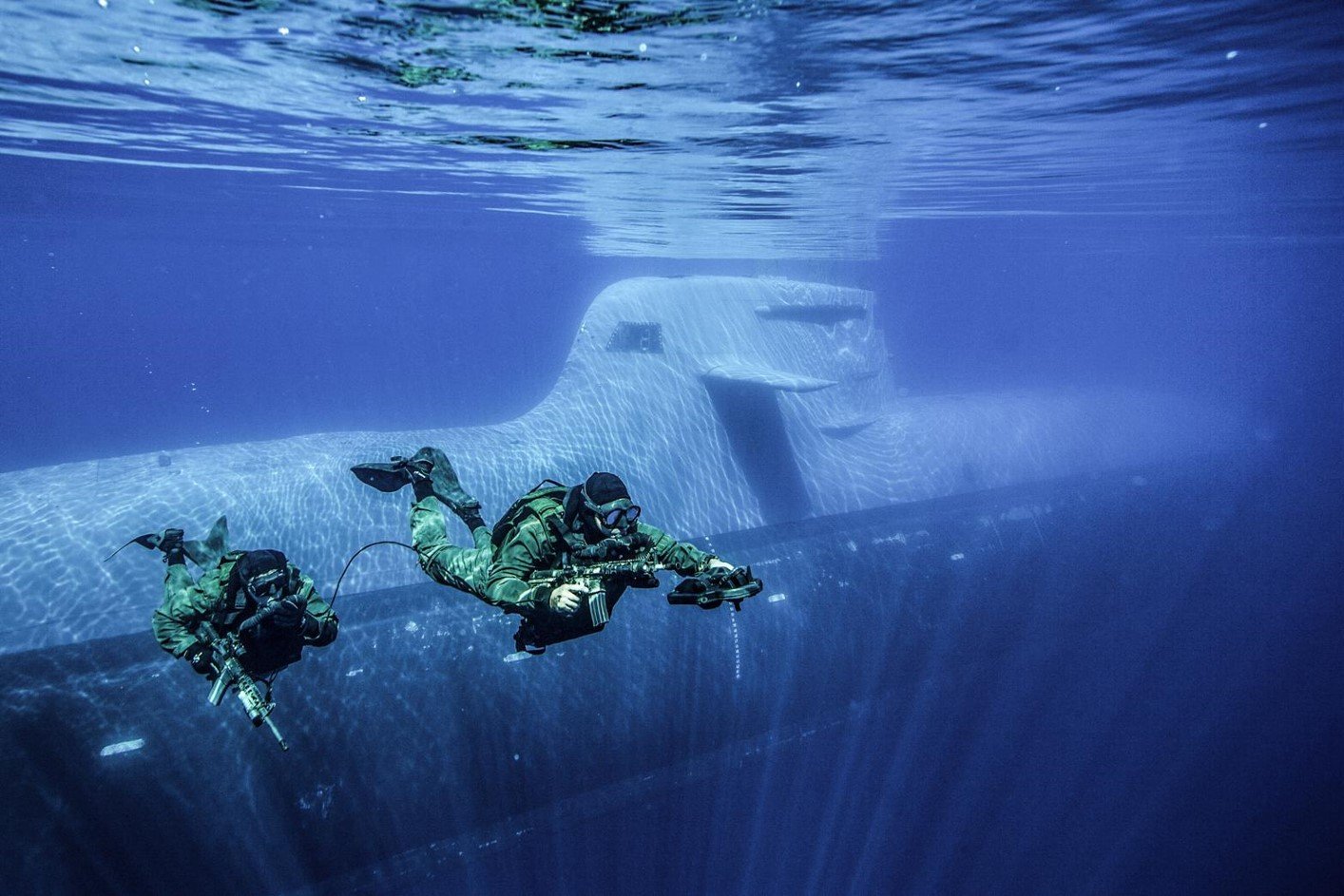
Military Diving Operations
Over 40 countries around the world are known to have active military diving units, who are responsible for a wide range of diving operations including:
- General Diving – Marine Salvage, Ships Husbandry, Underwater Engineering, Marine Construction & Demolition.
- Tactical Diving – Special Operations and Support Operations onboard small platforms.
- Mine Countermeasures – Detection & Clearance or mine and other explosives.
- Search, Rescue & Recovery Operations – Capsized or sunken vessels, missing persons.
- Submarine Escape & Rescue
All diving operations come with occupational hazards as none more than the risk of pressure related injuries such as Decompression Sickness or Gas Embolisms. In military diving, due to operational constraints, it may not be possible to complete decompression stops before returning to the surface, which reduces the risk of onset of decompression sickness. In addition, the demands and urgency of a diving operation may mean the divers have to complete multiple dives, known in the industry as bounce-diving, further increasing risks.
Hyperlite Use in Military Diving
The design and development of Hyperlite chambers for military diving has been the key company focus since we began developing hyperbaric chambers in the late 1980’s. Our solutions focus on key competencies for rapid response, lightweight systems, suitable for use close to front line operators and thus allowing divers suffering from pressure related injuries to be treated without delay.
Our flagship product, the Hyperlite 1 is used by various Special Operations teams within Army, Navy, Air Force, Marines and Coastguard, due to the lightweight modular set-up, suitable for human lift and rapid evacuation. In addition, the Hyperlite 1 has the capability to continue a full US Navy Treatment Table 6 up to 17,300 ft in an unpressurised air cabin, averting any patient exposure due to pressure changes or reduced oxygen levels in the air.
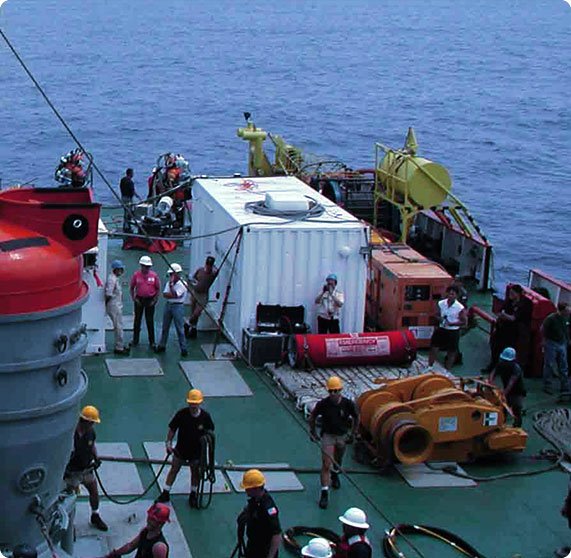

This equipment was recently pressed into action to evacuate a DCS in a civilian diver with paraplegia from South Pacific to Hawaii. It was not necessary to pressurise the aircraft to sea-level or fly under altitude restrictions, amounting to over $10,000 in estimated fuel savings while receiving oxygen treatment en-route.
Brigadier General, US Air Force

Hyperlite Multi-Occupant Chambers for General Military Diving Use
New developments of multi-occupancy Hyperlite chambers now expand the intended use for military diving applications with a number of new capabilities in addition to our underlying principles of low weight and small packaged volume, these include
- The increased diameter of 106cm or 42” allows an additional occupant inside the chamber (known as the tender), available either to provide ‘hands-on’ medical assistance to an injured diver or to have two patients treated simultaneously.
- The Double-Lock Chamber provides an Entry Lock for care-givers to move inside and outside of the chamber, whilst the patient is kept under pressure.
- New multi-occupant chambers have the ability to reach Maximum Operating Pressure of up to 5 bar, suitable to complete higher pressure dive treatment tables, which are sometimes used for treating Gas Embolisms.
The new range of Hyperlite SL3 Hyperbaric Chambers – a Single Lock, 3 Bar Hyperbaric Chamber and Hyperlite DL5 – A Double Lock, 5 Bar Hyperbaric Chamber – are intended as a versatile, lightweight option for more general use diving in military diving divisions – including Navy Vessels, where versatile multi-functional patrol vessels are central to modern military strategy.
Environmental Impacts of Hyperlite
SOS Group is committed to a reduction in emissions, both in our company operations and in the products we provide. The Hyperlite Systems are designed to support this ethos, with a number of key features that reduce energy usage
- Our lightweight systems reduce the requirement for heavy lifting equipment and building work for structural reinforcements, when compared to metallic chambers.
- Our Hyperlite 1 System allows fixed and rotary wing aircraft to operate at higher altitude when compared to operational restrictions when carrying a patient suffering from pressure-related injuries or low blood/oxygen levels (hypoxia).
- Our servicing and maintenance packages reduce the long-term transportation requirements of staff and equipment throughout the product life-cycle.
- Our equipment allows the operator to cover larger areas with a rapid response solution rather than requiring more fixed equipment with associated operations.
We remain committed to reducing our footprint wherever possible. If you think there are ways that we can improve, we would love to hear from you. Please contact us here.

Our Range
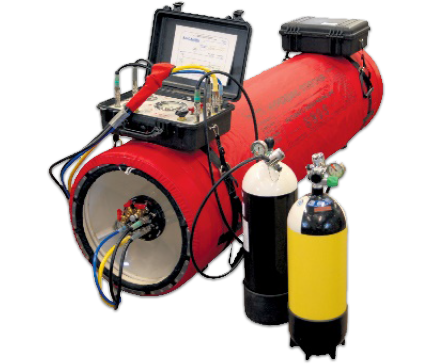
| 1 | |
 Weight: Weight: |
100kg |
 Max Operating Pressure: Max Operating Pressure: |
2.3 Bar(g) 3.3 ATA |
Purpose: |
Transfer-Under-Pressure, Emergency Evacuation |
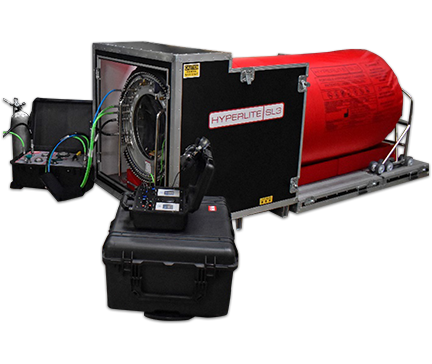
| 2 | |
 Weight: Weight: |
230kg |
 Max Operating Pressure: Max Operating Pressure: |
3 Bar(g) 4 ATA |
Purpose: |
Full Treatment onvessel/site. Designed for use in fixed location |
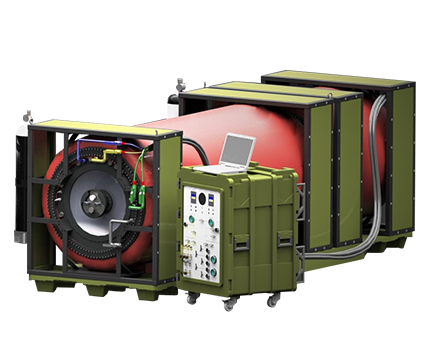
| 3-4 | |
 Weight: Weight: |
>550kg |
 Max Operating Pressure: Max Operating Pressure: |
5 Bar(g) 6 ATA |
Purpose: |
Full Treatment on site. Transportable for Multiple Scenarios |
About Decompression Sickness
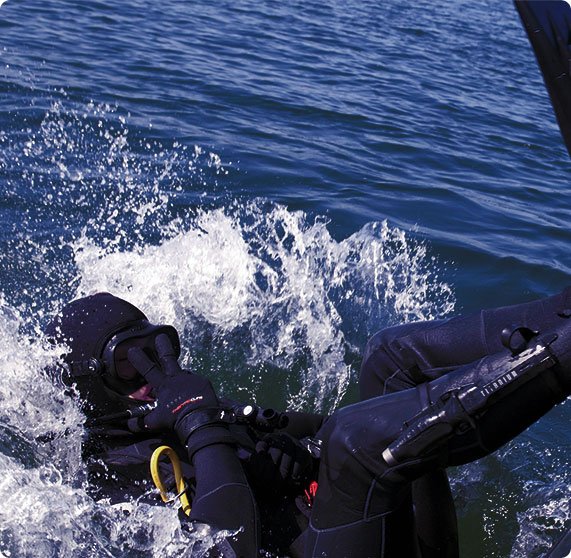
Also known as Decompression Illness, DCS, DCI or ‘the bends’, is caused by the formation of multiple inert gas bubbles in the tissues of the human body, which can cause mechanical stress or organ dysfunction. Decompression is often seen through rapid changes in pressure, through diving, high altitude excursions, submarine escape & rescue, in space or in uncontrolled pressurisations/depressurisations in a hyperbaric chamber.
The addition of breathing compressed gas at changing pressures increases the risk of suffering from Decompression Sickness. The resulting symptoms may include, but not be limited to, joint pains, sensations of tingling, loss of sensation, skin rashes, malaise, neurological disfunction, cardiorespiratory symptoms, pulmonary oedema, shock and death. Severe symptoms may occur within 1 – 3 hours of decompression with majority of symptoms occurring within 24 hours.
The rationale for the treatment of DCS with Hyperbaric Oxygen (HBO2) includes immediate reduction in bubble volume, increasing diffusion of inert gas and bubbles, oxygenation of ischemic tissue and reduction of Central Nervous System (CNS) oedema. The efficacy of administration of oxygen at increased ambient pressure (HBO2) is widely accepted and the main treatment protocol for this disease.
This information is interpreted from the Hyperbaric Indicators for AGE Section published by the Undersea & Hyperbaric Medical Society (UHMS). https://www.uhms.org/resources /hbo-indications.html
About Arterial Gas Embolism AGE from Diving
Causes of Gas Embolism (also known as Air Embolism or AGE) are usually associated with a diver holding their breath as they return to the surface. The expansion of the gas inside the body expands as the pressure reduces, which can cause significant internal damage to the human body. Clinical studies have shown several mechanisms can occur including significant reductions in blood flow or even complete restriction (arterial occlusion). Such incidences may be immediate, progressive or can relapse after initial improvements in patient conditions. Symptoms of AGE may include, but not be limited to, loss of consciousness, confusion, focal neurological deficits, cardiac arrhythmias or ischemia. Venous gas embolism can manifest as hypotension, tachypnoea, hypocapnia, pulmonary oedema or cardiac arrest.
This information is interpreted from the Hyperbaric Indicators for AGE Section published by the Undersea & Hyperbaric Medical Society (UHMS). https://www.uhms.org/resources /hbo-indications.html
